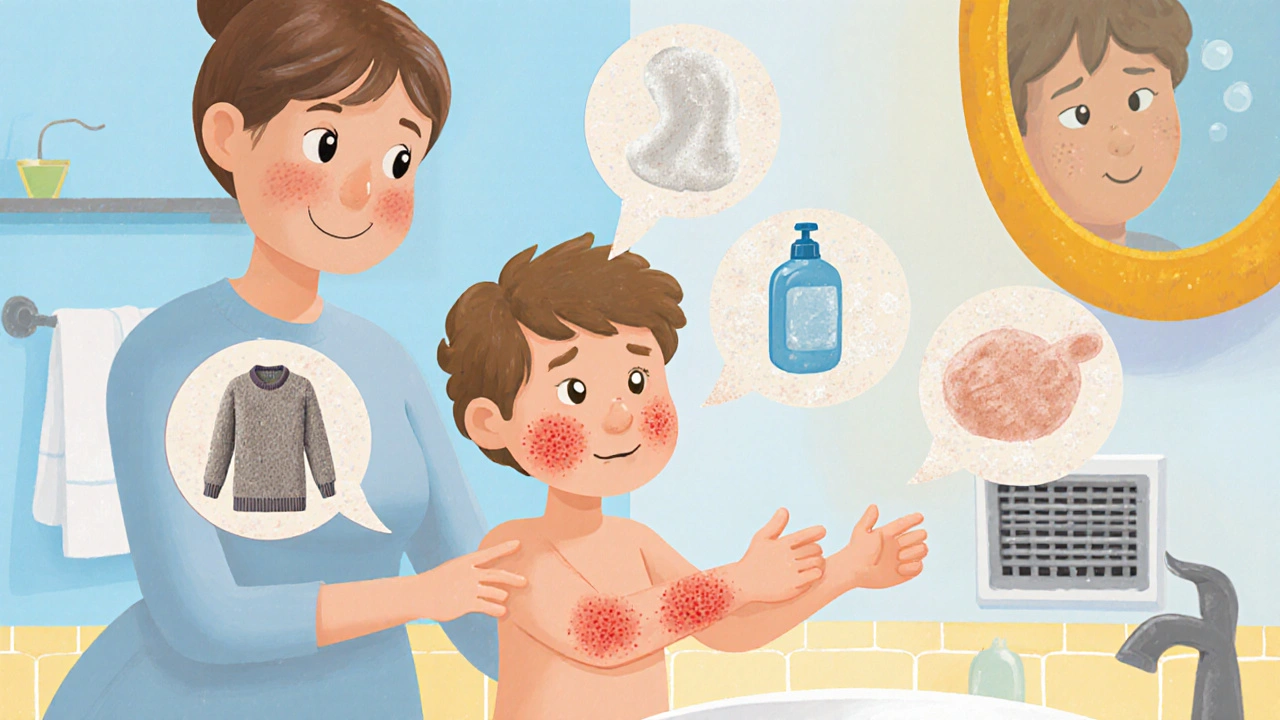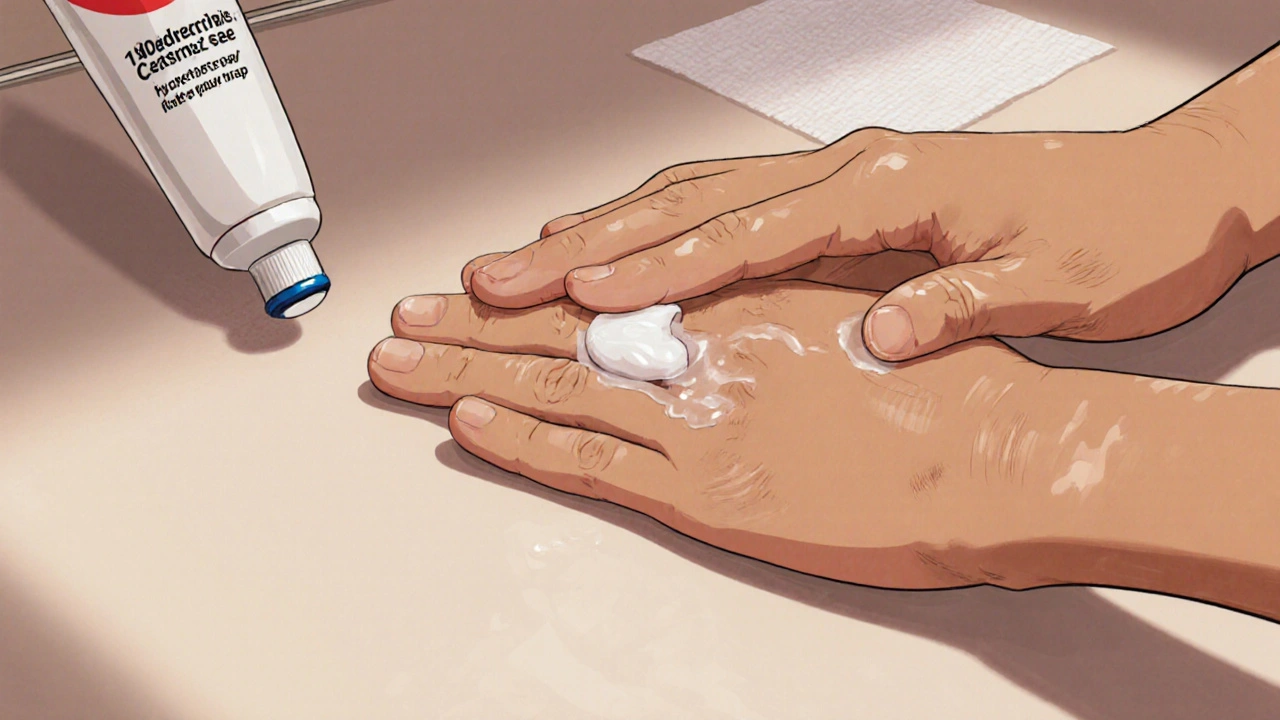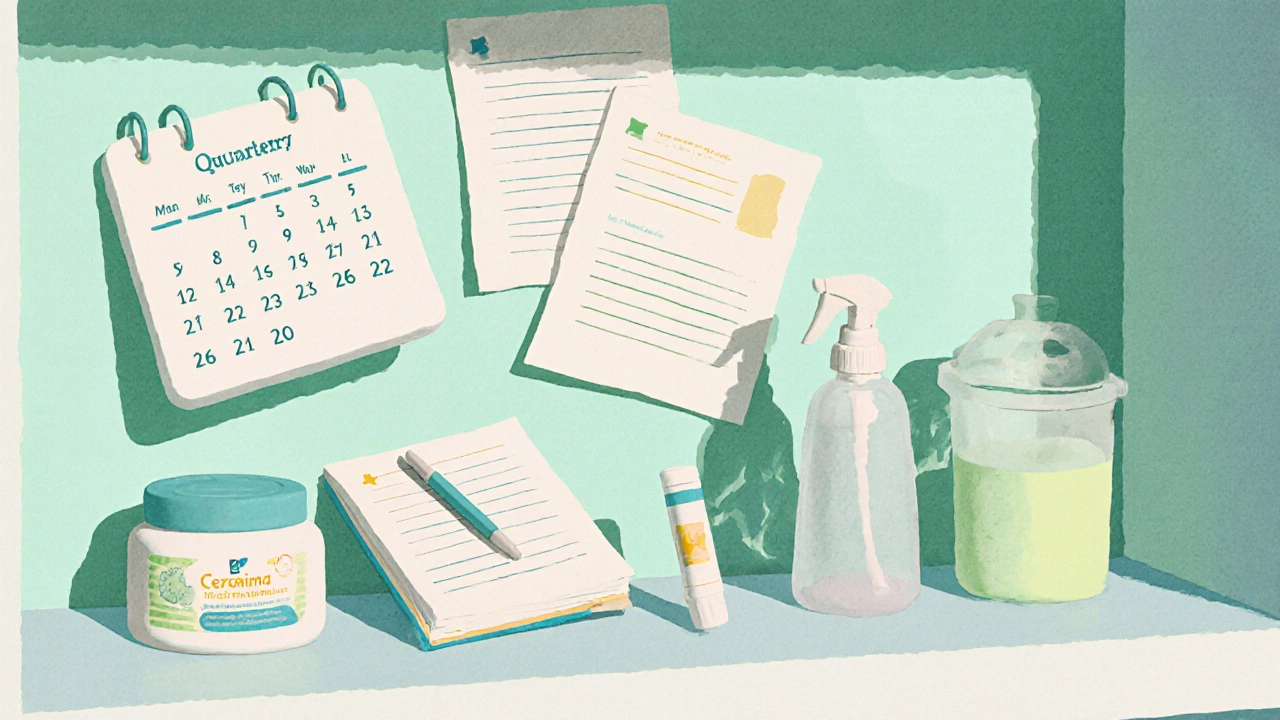Hydrocortisone for Eczema: How to Use It safely and Effectively

Oct, 20 2025
Hydrocortisone Application Calculator
Enter Your Information
Your Application Guide
Results will appear here after calculation
When dealing with Hydrocortisone is a mild topical corticosteroid that eases inflammation and itching, many parents and sufferers wonder whether it’s the right answer for their Eczema is a chronic skin condition marked by red, itchy patches and a compromised skin barrier. This guide walks you through everything you need to know-when to reach for the cream, how to apply it, what side effects to watch for, and which alternatives might work better for you.
Understanding Eczema and Its Triggers
Eczema, medically known as atopic dermatitis, affects roughly 10% of children and 3% of adults in the United States. The condition stems from a combination of genetics, immune system over‑reactivity, and a weakened skin barrier that loses moisture quickly. Common triggers include harsh soaps, low humidity, stress, and certain fabrics. Knowing your personal triggers helps you decide how aggressively you need to treat flare‑ups.
What Makes Hydrocortisone Effective?
Hydrocortisone belongs to the broader class of Topical corticosteroids are anti‑inflammatory medications applied directly to the skin to calm immune responses. It works by binding to glucocorticoid receptors in skin cells, which slows down the release of cytokines that cause redness and itching. Because it’s low‑potency, the risk of skin thinning is lower than with stronger steroids, making it a first‑line option for mild‑to‑moderate eczema.
Choosing the Right Strength
Over‑the‑counter (OTC) hydrocortisone typically comes in 0.5% or 1% concentrations. Prescription‑only versions can reach 2.5% or higher. Here’s a quick comparison:
| Product | Strength / Potency | OTC Availability | Typical Use | Key Risks |
|---|---|---|---|---|
| Hydrocortisone Cream | 0.5% - 1% (low) | Yes | Mild flare‑ups, facial eczema | Rare skin thinning if used >2 weeks |
| Prescription Hydrocortisone | 2.5% (moderate) | No | Persistent patches, hands/feet | Potential thinning, stretch marks |
| Moisturizer (e.g., ceramide‑rich) | n/a | Yes | Daily barrier repair | Minimal |
| Tacrolimus Ointment (0.03%/0.1%) | Low‑to‑moderate | Prescription | Steroid‑sparing for sensitive areas | Burning sensation, rare lymphoma concern |

How to Apply Hydrocortisone Correctly
- Wash your hands and gently clean the affected skin with a mild, fragrance‑free cleanser.
- Pat the area dry; leave a thin layer of moisture to help the cream spread.
- Apply a pea‑sized amount to each patch-no more than a thin film.
- Rub in gently for 30 seconds; avoid rubbing too hard, which can damage the barrier.
- Wash your hands again after application.
Most dermatologists recommend using the cream twice daily for no more than 7-14 days per flare. If symptoms improve earlier, you can taper to once daily or switch to a plain moisturizer.
Potential Side Effects and How to Minimize Them
Even low‑potency steroids aren’t completely risk‑free. Common side effects include:
- Temporary skin redness or burning.
- Skin thinning (atrophy) after prolonged use.
- Stretch marks (striae) on areas where the cream is used repeatedly.
- Hypopigmentation, especially on darker skin tones.
To keep these risks low, follow the Steroid potency is a classification that measures how strong a corticosteroid is, ranging from low (hydrocortisone) to very high (clobetasol) guidelines, rotate treatment sites, and always pair the steroid with a fragrance‑free moisturizer to restore the skin barrier.
When to Seek Professional Advice
If you notice any of the following, stop using the cream and consult a Dermatologist is a a medical doctor specialized in skin, hair, and nail disorders:
- Symptoms persist beyond two weeks despite regular use.
- Signs of infection-pus, crusting, or a foul odor.
- Severe thinning or visible stretch marks.
- Worsening of eczema on the face or genitals (areas where steroids are risky).
Your doctor may prescribe a higher‑potency steroid for a short burst, add a non‑steroid immunomodulator like tacrolimus, or suggest phototherapy if the disease is extensive.

Alternative and Complementary Therapies
Not everyone wants to rely on steroids long term. Here are proven adjuncts that work well with or without hydrocortisone:
- Moisturizers are products that hydrate the skin and reinforce the lipid barrier. Apply right after a shower-while the skin is still damp.
- Tacrolimus is a topical calcineurin inhibitor that reduces inflammation without the risk of skin thinning. Best for face and skin folds.
- Wet wrap therapy: after applying hydrocortisone, cover the area with a damp gauze followed by a dry layer. This boosts absorption and soothes itching.
- Identify and avoid triggers-use fragrance‑free laundry detergents, maintain indoor humidity above 40%, and manage stress through yoga or meditation.
Long‑Term Management Strategy
Think of eczema as a marathon, not a sprint. A sustainable plan looks like this:
- Daily Barrier Care: Moisturize morning and night with a ceramide‑rich cream.
- Spot‑Treat Flare‑Ups: Keep a small tube of 1% hydrocortisone handy for fast relief.
- Quarterly Check‑Ins: Visit your dermatologist at least four times a year to adjust treatment.
- Trigger Log: Note foods, activities, or weather changes that precede flare‑ups.
- Education: Teach children how to apply moisturizer gently; early habits prevent chronic damage.
By combining consistent barrier maintenance with smart, limited use of hydrocortisone eczema therapy, most people keep itching under control and reduce the need for stronger prescriptions.
Frequently Asked Questions
Can I use hydrocortisone on my child's face?
Yes, but stick to the 0.5% or 1% OTC version and apply it only once daily for a few days. The facial skin is thin, so limit use and follow up with a gentle moisturizer.
How long can I safely use hydrocortisone?
Most experts advise a maximum of two weeks per flare‑up. If you need it longer, talk to a dermatologist about rotating to a steroid‑sparing agent.
Is it okay to combine hydrocortisone with moisturizers?
Absolutely. In fact, applying a moisturizer right after the steroid helps lock in moisture and can reduce irritation.
What are the signs of steroid overuse?
Look for thinning skin, stretch marks, easy bruising, or a change in skin color. If any appear, stop the cream and seek medical advice.
Are there natural alternatives to hydrocortisone?
Aloe vera gel, colloidal oatmeal baths, and cold compresses can soothe mild itching, but they don’t suppress inflammation as effectively as a steroid. Use them for very mild cases or alongside prescribed treatment.
Managing eczema is a balance between calming flare‑ups and protecting the skin’s natural barrier. Hydrocortisone remains a cornerstone for quick relief, but the smartest plan mixes short‑term steroid use with daily moisturization and trigger control. Keep this guide handy, and you’ll feel more confident navigating the ups and downs of eczema.
